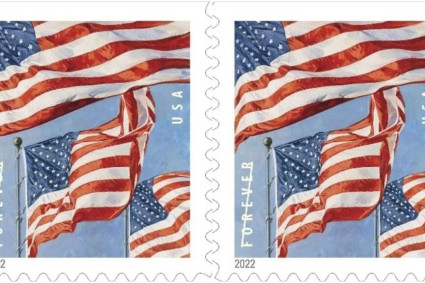
YouTube, the world's leading video-sharing platform, has become a powerful tool for marketers and advertisers. With over 2 billion logged-in monthly active users, YouTube presents an enormous potential audience for businesses to showcase their products or services. In this comprehensive guide, we will delve into the world of YouTube advertising, exploring its various formats, strategies, and how you can make the most out of your advertising efforts on this platform.
YouTube Advertising Formats and Options
YouTube offers several advertising formats, each designed to cater to different marketing objectives and audience preferences. Understanding these formats is crucial for crafting an effective advertising strategy:
1. TrueView Ads:
TrueView ads give viewers the option to skip the ad after 5 seconds. Advertisers are charged only when viewers choose to watch the full ad or the first 30 seconds (whichever comes first). This format is ideal for creating engaging and informative content.
2. Preroll Ads:
Preroll ads are non-skippable ads that play before the viewer's chosen video. They are best suited for creating short, impactful messages to capture immediate attention.
3. Bumper Ads:
Bumper ads are short, non-skippable ads that are limited to 6 seconds. They are excellent for delivering quick, memorable messages to the audience.
4. Display Ads:
These ads appear on the right side of the featured video or below the video suggestions. They include overlay ads, sponsored cards, and display ads.
Crafting Effective YouTube Advertising Strategies
To make the most of YouTube advertising, you need a well-thought-out strategy. Here are some key steps to craft an effective YouTube advertising strategy:
1. Define Your Objectives:
Start by clearly outlining your advertising goals. Whether it's increasing brand awareness, driving website traffic, or boosting product sales, a well-defined objective will guide your entire advertising campaign.
2. Know Your Target Audience:
Understanding your target audience is crucial for creating content that resonates with them. Conduct thorough research to identify their demographics, interests, and preferences.
3. Create Compelling Content:
Produce engaging and relevant content that captures attention within the first few seconds. Tell a story, showcase your product's benefits, or evoke emotions to connect with your audience.
4. Optimize for Keywords and SEO:
Optimize your video titles, descriptions, and tags with relevant keywords to improve visibility in search results. Utilize SEO best practices to increase the reach of your ad.
5. Utilize Audience Targeting:
Leverage YouTube's audience targeting options to reach the right audience based on demographics, interests, behaviors, and more. Narrow down your targeting to maximize ad relevance.
6. Monitor and Analyze Performance:
Regularly monitor your ad performance using YouTube analytics. Analyze metrics such as click-through rates (CTR), view duration, and conversion rates to optimize your campaigns and improve ROI.
Benefits of YouTube Advertising
YouTube advertising offers numerous advantages for businesses seeking to enhance their online presence and drive results:
1. Extensive Reach:
With over 2 billion active users, YouTube provides a vast and diverse audience, allowing advertisers to reach potential customers worldwide.
2. Engaging Visual Content:
Video content is highly engaging and memorable, making it an effective medium for conveying your message and capturing the audience's attention.
3. Cost-Effective Advertising:
YouTube's flexible pricing models, such as pay-per-view (PPV) and pay-per-click (PPC), allow businesses to optimize their ad spend and achieve a higher return on investment (ROI).
4. Detailed Analytics and Insights:
YouTube provides comprehensive analytics that give advertisers valuable insights into their campaigns, enabling them to make data-driven decisions and refine their strategies.
5. Integration with Google Ads:
YouTube advertising is seamlessly integrated with Google Ads, allowing advertisers to manage their campaigns from a centralized platform and reach a wider audience through various Google properties.
Conclusion
YouTube advertising offers immense potential for businesses to reach their target audience, increase brand awareness, and drive conversions. By understanding the different advertising formats, crafting a tailored strategy, and optimizing your content, you can unlock the full benefits of YouTube advertising and elevate your brand to new heights. Stay updated with the latest trends and innovations in the platform to continually refine your advertising approach and stay ahead in this competitive digital landscape.
FAQ
Q1: How much does advertising on YouTube cost?
A1: The cost of advertising on YouTube varies based on the type of ad format you choose and your targeting options. YouTube offers flexible pricing models, including cost-per-view (CPV) for TrueView ads and cost-per-thousand-impressions (CPM) for non-skippable ads. You can set a budget that aligns with your advertising goals and only pay when viewers engage with your ad.
Q2: How can I measure the success of my YouTube advertising campaigns?
A2: YouTube provides detailed analytics through YouTube Analytics and Google Ads. Key metrics to measure success include views, click-through rates (CTR), view duration, conversions, and engagement. Analyzing these metrics will help you evaluate the performance of your ads and make data-driven decisions to optimize future campaigns.
Q3: What are some best practices for creating engaging YouTube ad content?
A3: To create engaging ad content, focus on capturing attention within the first few seconds, tell a compelling story, showcase your product's benefits, and use high-quality visuals and sound. Also, ensure that your content aligns with your brand's messaging and resonates with your target audience.
Q4: How can I target my ads to specific audiences on YouTube?
A4: YouTube offers various targeting options, including demographic targeting (age, gender, location), interests targeting, behavioral targeting, and more. Additionally, you can target based on specific videos, channels, or keywords related to your target audience's interests.
Q5: Are there any content guidelines or restrictions for YouTube advertising?
A5: Yes, YouTube has strict content policies and guidelines that advertisers must adhere to. These guidelines include restrictions on inappropriate content, misleading claims, hate speech, and other violations of community standards. Adherence to these guidelines is essential to ensure the success of your ad campaigns.



